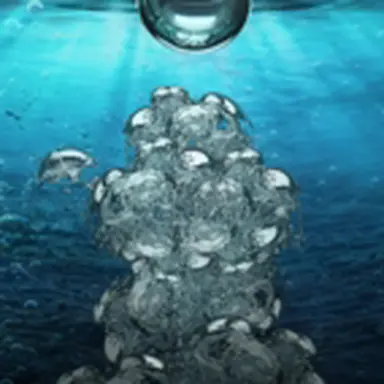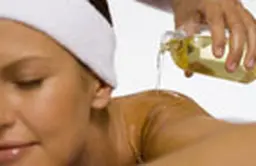
Demineralized water does not lay down the law in cosmetic formulation: there are a number of alternatives available to enrich beauty products, like floral waters. What is the manufacturing process involved? What are their benefits? Ingredient supplier Codif unveiled the secrets of their floral waters to us.
Cyrielle Houdin, Product Manager, answered CosmeticOBS’s questions.
Codif Technologie Naturelle: ID file
French company Codif was founded in 2002. It is based in Saint-Malo, Brittany, and specialized in the research and development of ingredients for the cosmetics industry. In terms of special waters, the company offers their customers marine spring water, seaweed water, and floral waters. Cyrielle Houdin emphasizes the fact that ‘raw materials are carefully selected in accordance with different global regulations and industry standards. Our active components are ISO 22716 (GMP standard)-certified and Codif guarantees their quality and performance.’
Floral waters
Codif produces three of them:
• Areaumat Perpetua: this ingredient is derived from Italian everlasting flowers. These yellow flowers enjoy sunny climates and their foliage is aromatic (curry smell). They can be found in the Mediterranean basin, but also in South Africa, Asia, and Australia.
• Hydrofiltrat Menyanthe: Codif uses marsh trefoil. It is a hardy, aquatic plant which grows in European, Asian, and North American ponds and swamps. It can be recognized with its horizontal rhizome (underground stems in hardy plants), which bears trifoliate leaves (they have three leaflets).
• Hydrofiltrat Marine Lotus G: this name actually refers to a marine lotus filtrate. It is a small, hardy plant with golden yellow flowers. It develops in humid environments near the sea, in particular in Western Europe. However, it can also grow in mountain regions, up to 1,600 metres above sea level.
Filtration
Codif uses two methods to filtrate flower extracts: lixiviation and vacuum hydrodistillation at low temperature.
• Hydrodistillation at low temperature: Cyrielle Houdin explains that ‘the dry plants are loaded in a reactor with water. The reactor is placed under vacuum and stirring, and then heated at a moderate temperature (<80 °C) to make the water and plants’ aromatic molecules evaporate. At such low pressure, water evaporates at a temperature near 50 °C. Then, the water and aromatic molecules (gaseous state) are cooled down and condensed to liquefy.’
• Hydrodistillation: this process consists of a circulation loop system for extraction solvents (demineralized water). The solvent flows several times upwards through the dry plant to gradually get filled with more and more molecules. After a few comings and goings, the water filled with floral molecules is retrieved.
Storage conditions
As regards this aspect, every type of water is stored differently. Cyrielle Houdin explains that ‘the company has developed standard storage conditions. However, Areaumat Perpetua is offered in an Ecocert/Cosmos version, or with a preservative, so the process is a little different.’
• Standard floral waters: we need to make sure they remain in their original packaging, closed, at room temperature (between 15 and 25 °C). The best-before date is of two years after the floral water was manufactured. Once opened, it should be stored in a cool place (4 °C).
• Ecocert/Cosmos Areaumat Perpetua: this version needs to be kept in its original packaging, closed, also at room temperature. And since it is a labelled extract, it is preservative-free, so it should be handled under sterile conditions. The best-before date is of three years and the product should be stored in a cool place after opening.
• Areaumat Perpetua with a preservative (phenoxyethanol): it is stored following the same process as the standard version. The only thing that changes is the best-before date: three years.
Cosmetics benefits
If certain floral waters are not associated with any claim and are integrated to formulas only for a touch of exoticism, Codif waters do have documented benefits.
• The aqueous extract of lotus (Lotus maritimus) helps fight against oxidative stress. It also contributes to reviving the lipolytic activity and controls the adipose tissue expansion.
• The aqueous extract of marsh trefoil contained in the Hydrofiltrat Menyanthes (Menyanthes trifoliata) is derived from ‘a semi-aquatic plant considered as a post-glacial relic, because it is very common in Quebec, along river Saint-Laurent, and in Labrador (Newfundland),’ reveals Cyrielle Houdin. This hydrolate protects vitamin C against oxidative stress and helps synthesize collagen. It is an anti-aging active.
• Italian everlasting flower (Helichrysum italicum) relieves sensitive epidermises. This water enhances the release of a neurotransmitter endowed with relaxing effects: β-endorphin.
Floral water and formulation: a good match?
As such, floral water is not known to destabilize cosmetic formulas. However, it is often used at minimal percentages in compositions. Cyrielle Houdin explains this by ‘the formulation cost, which would get too high. Floral water is an expensive ingredient. Putting too much of it would dramatically increase the production cost.’
Hydrolate and floral water: is there a difference?
Many people tend to think there is no difference between a hydrolate and a floral water. But, the two terms are not synonyms. Cyrielle Houdin explains that ‘a floral water contains molecules derived from a flower. There are several techniques available to obtain it (lixiviation, hydrodistillation, maceration…). By contrast, a hydrolate is a plant extract (flower, leaf, fruit, etc.) obtained by steam distillation.’
Floral waters are really interesting when it comes to taking care of our skins by natural means. They provide cosmetics with freshness, and they are as pretty to look at as they are useful in beauty products. Much remains to be said about flowers!
Learn more
• Read our article, ‘Floral water-based cosmetics’ – soon online.
JS





